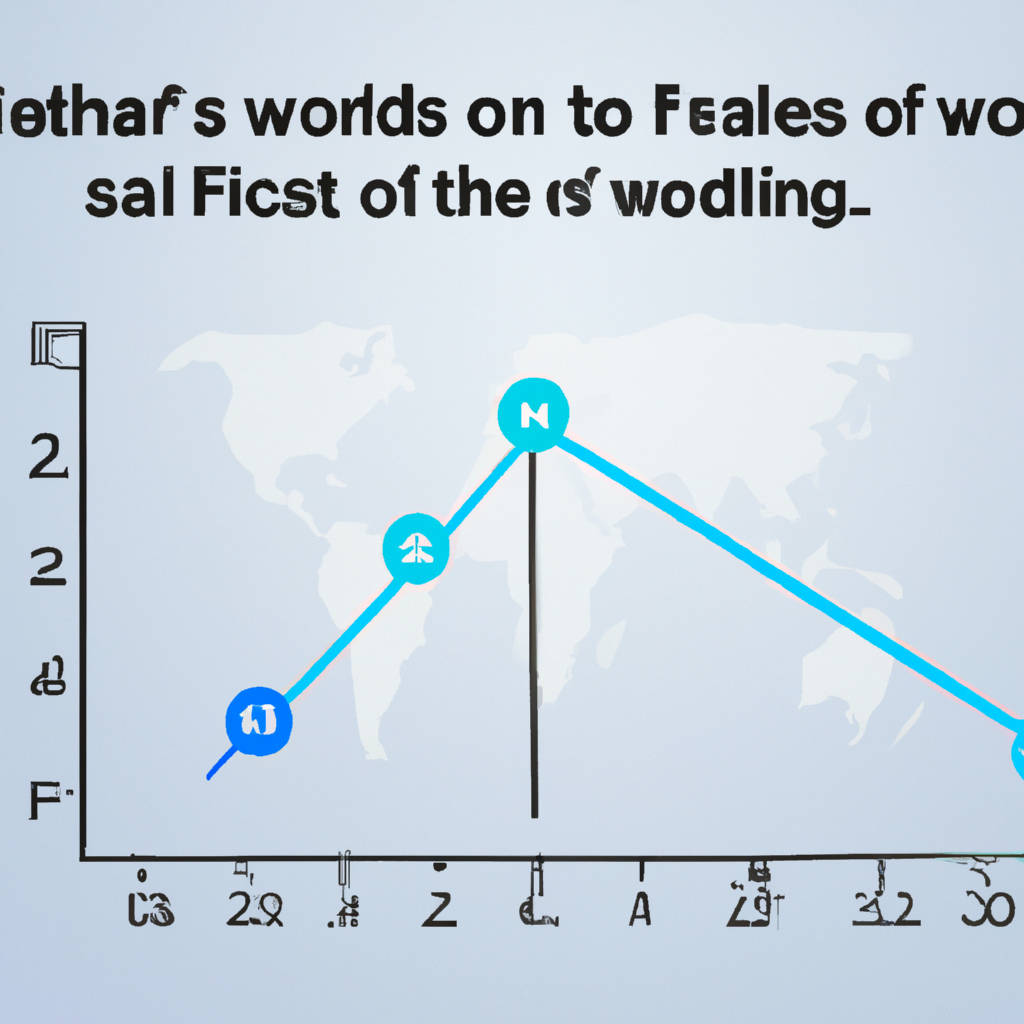The FIFA standings hold immense significance in the world of football, serving as a barometer to assess the performance and ranking of national teams across the globe. These standings provide a comprehensive view of the relative strength and prowess of each team, allowing fans, players, and coaches to gauge their progress and compare their achievements with other nations.
The FIFA standings are determined using a sophisticated ranking system that takes into account various factors. These factors include match results, the importance of the match, the relative strength of the opponent, and the time elapsed since the match was played. This complex algorithm ensures that the rankings reflect the current state of the teams accurately.
The standings serve multiple purposes. Firstly, they allow teams to set goals and targets for themselves. A higher ranking motivates teams to strive for improvement, pushing them to perform better in their matches. Additionally, the standings play a crucial role in determining the seeding for international competitions and tournaments. Higher-ranked teams are often given favorable draws, which can greatly impact their chances of success.
For fans, the standings provide a means of comparing their favorite team’s performance with others. It fosters healthy rivalries and fuels passionate debates. The standings also aid in predicting match outcomes, as teams with higher rankings are generally expected to defeat lower-ranked opponents.
From a broader perspective, the FIFA standings contribute to the development of football worldwide. Lower-ranked teams often strive to improve their rankings, which drives them to invest in infrastructure, training facilities, and youth development programs. This, in turn, helps to elevate the overall standard of football in these nations.
In conclusion, the FIFA standings serve as a vital tool in assessing the performance and ranking of national football teams. They provide a comprehensive and objective measure of a team’s relative strength, motivating teams to strive for improvement and aiding in the organization of international competitions. Ultimately, the standings contribute to the growth and development of football across the globe.

FIFA World Cup Standings
The FIFA World Cup is undoubtedly one of the most highly anticipated sporting events in the world. Every four years, countries from all corners of the globe come together to showcase their football prowess and compete for the prestigious title. As the tournament progresses, teams battle it out on the field, and the standings become a crucial aspect of the competition. These standings determine which teams advance to the knockout stages and ultimately have a shot at lifting the coveted trophy.
The World Cup standings are essentially a reflection of each team’s performance throughout the tournament. Points are awarded based on the outcome of each match, with three points for a win, one point for a draw, and zero points for a loss. These points are then used to determine a team’s position in the standings. In the event of a tie in points, goal difference and goals scored are considered as tiebreakers.
As the group stage unfolds, fans eagerly keep an eye on the standings, analyzing each team’s chances of progressing to the next round. A team’s position in the standings is crucial, as only the top two teams from each group advance to the knockout stages. The standings are a testament to a team’s consistency and ability to perform under pressure.
The World Cup standings also play a significant role in shaping the strategies and tactics of teams. Coaches and players closely study the standings to assess their competitors and plan their approach for the upcoming matches. A team that is leading the standings may opt for a more defensive strategy, aiming to maintain their position and secure a favorable draw in the knockout stages. Conversely, a team struggling in the standings may adopt a more attacking approach, seeking to secure the necessary points to move forward in the competition.
The World Cup standings are not only a source of excitement for fans but also a reflection of a nation’s footballing prowess. They symbolize the collective efforts of players, coaches, and fans who have invested time, energy, and resources into their national teams. The standings represent the hopes and dreams of an entire nation, and the performance of their team becomes a matter of national pride.
However, the standings can also be a source of disappointment and heartbreak. Teams that fail to perform as expected may find themselves at the bottom of the standings, with their World Cup dreams shattered. This can lead to introspection and a reassessment of a country’s footballing infrastructure and development programs, with the aim of improving future performances.
The World Cup standings have witnessed both historic achievements and surprising upsets throughout the tournament’s history. Underdogs have defied expectations and climbed the standings, while football powerhouses have experienced unexpected setbacks. These fluctuations in the standings add an element of unpredictability and drama to the World Cup, making it an enthralling spectacle for fans worldwide.
In conclusion, the World Cup standings are a crucial component of the tournament, determining which teams progress to the knockout stages and have a chance at becoming world champions. They reflect a team’s performance, shape strategies, and evoke national pride. As fans eagerly await the next edition of the World Cup, they will once again witness the rise and fall of teams in the standings, adding to the rich tapestry of this global football extravaganza.
FIFA Confederations Cup Standings
The FIFA Confederations Cup is an exhilarating tournament that showcases the talents of various national football teams from around the world. As the tournament progresses, the teams battle it out on the field, aiming to climb to the top of the standings and secure a spot in the final. The standings serve as a reflection of the teams’ performances and determine their fate in the tournament.
In this thrilling competition, each team strives to outperform its rivals and secure a coveted position in the standings. The standings not only provide a sense of accomplishment but also serve as a crucial determinant for the team’s progression in the tournament. With so much at stake, the teams leave no stone unturned in their pursuit of success.
As the matches progress, the standings start to take shape, revealing the teams’ positions and points earned. The teams that secure victories are rewarded with valuable points, propelling them higher in the standings. These points serve as a testament to the team’s skill, strategy, and determination.
In the early stages of the tournament, the standings are highly volatile, with teams moving up and down based on their performances. A single victory or loss can dramatically impact a team’s position, adding an element of unpredictability to the tournament. The teams are well aware of this, and their every move on the field is aimed at securing a favorable position in the standings.
As the tournament progresses, the teams that consistently perform well start to establish themselves as contenders. Their impressive displays of skill and teamwork are reflected in the standings, where they find themselves inching closer to the top. These teams gain momentum and confidence, which further fuels their determination to climb higher.
However, the standings also act as a wake-up call for teams that have not performed up to par. The teams find themselves lower in the rankings, and this serves as a motivator to reassess their strategies and rectify their shortcomings. They understand that their fate in the tournament depends on their ability to improve and secure victories in the upcoming matches.
The final stages of the tournament witness intense battles among the top-ranked teams. Every match becomes crucial, as the standings become tighter, and a single victory can propel a team to the top. The teams put forth their best efforts, leaving no room for complacency. The standings serve as a constant reminder of the high stakes involved, urging the teams to give their all on the field.
For the teams that manage to secure the top positions in the standings, the reward is not only a sense of achievement but also an advantage in the tournament. The higher-ranked teams often face relatively weaker opponents in the knockout stages, giving them an edge in their pursuit of the ultimate glory.
In conclusion, the FIFA Confederations Cup standings play a pivotal role in determining the fate of the teams in the tournament. The standings reflect the teams’ performances, showcasing their skills, strategies, and determination. With each match, the standings evolve, creating an atmosphere of excitement and unpredictability. For the teams, the standings serve as a constant reminder of the high stakes involved, urging them to give their best on the field. The teams strive to secure a favorable position in the standings, knowing that it can make all the difference in their quest for glory.

FIFA Club World Cup Standings
The FIFA Club World Cup is an annual international football tournament that brings together the champion clubs from each of the six continental confederations, as well as the host nation’s league champion. This prestigious event showcases the best club teams from around the world and has become a highly anticipated competition among football enthusiasts.
The tournament features a unique format that consists of seven teams, with the host nation automatically qualifying and the remaining six teams determined through regional competitions. The participating clubs compete in a knockout-style tournament, culminating in a final match to determine the world club champions.
As the tournament progresses, the teams’ performances are reflected in the FIFA Club World Cup standings. These standings provide a clear picture of each club’s journey throughout the competition, measuring their success and determining their final ranking. The standings are updated after each match, allowing fans and analysts to closely follow the teams’ progress.
The FIFA Club World Cup standings play a pivotal role in determining the teams’ paths to the final. Each match’s outcome directly impacts the standings, with victories earning the winning team crucial points and advancing them through the tournament. Draws, on the other hand, may require additional matches or penalty shootouts to determine a winner, resulting in modified standings.
The standings not only showcase the teams’ success but also provide valuable insights into their overall performance. A team’s goal difference, which is calculated by subtracting the number of goals they have conceded from the number of goals they have scored, can be a significant factor in determining their position in the standings. Goal difference serves as a tiebreaker when two or more teams have the same number of points, ensuring fair rankings.
Throughout the tournament, the FIFA Club World Cup standings become a point of reference for fans, media, and teams alike. They create a sense of excitement and anticipation, as teams strive to climb the rankings and reach the final. The standings also serve as a motivation for teams to perform at their best, as a high placement can enhance their reputation on the international stage.
The FIFA Club World Cup standings also hold historical significance, as they reflect the tournament’s evolution over the years. As new teams emerge and showcase their talent, the standings provide a record of their achievements and contributions to the competition’s history. Looking back at previous standings allows us to appreciate the growth and development of club football worldwide.
Beyond the competitive aspect, the FIFA Club World Cup standings serve as a celebration of the sport’s global reach. The tournament brings together clubs from various continents, each representing their respective confederation and showcasing their unique style of play. The standings highlight the diversity and unity inherent in football, as teams from different cultures and backgrounds come together to compete for the ultimate prize.
In conclusion, the FIFA Club World Cup standings hold immense importance in the tournament’s structure and narrative. They provide a comprehensive overview of each team’s performance, guiding their path to the final and determining their ultimate ranking. Beyond the competition itself, the standings celebrate the global nature of football, uniting clubs from around the world in a thrilling display of skill and passion.
FIFA Rankings
The FIFA Rankings: A Global Measure of Football Excellence
In the world of football, few things capture the imagination quite like the FIFA Rankings. These rankings, updated monthly, serve as the ultimate testament to a nation’s footballing prowess, providing a snapshot of its standing on the global stage. While controversies have swirled around the accuracy and fairness of these rankings, there is no denying their significance in shaping the footballing landscape.
The FIFA Rankings were first introduced in 1992 as a means to provide an objective measure of national teams’ performances. The rankings are calculated based on a complex algorithm that takes into account a variety of factors, including match results, the importance of matches, and the strength of opposing teams. This intricate system aims to provide a fair evaluation of each nation’s footballing achievements.
One of the key advantages of the FIFA Rankings is their ability to stimulate healthy competition among footballing nations. Teams are constantly striving to climb up the rankings, which serves as a powerful motivator for players and coaches alike. The rankings provide a sense of validation and recognition for teams that consistently perform well, giving them the opportunity to showcase their talent and attract attention from the global football community.
Moreover, the FIFA Rankings play a crucial role in determining the seeding and draw for major international tournaments, such as the FIFA World Cup and continental championships. The higher a team’s ranking, the more favorable their draw and the greater their chances of progressing further in the tournament. This adds an extra layer of excitement and anticipation to these competitions, as teams aim to secure a favorable position through their performance on the field.
The rankings also have significant implications for smaller footballing nations, offering them a platform to showcase their potential and gain international recognition. By achieving positive results against higher-ranked teams, smaller nations can climb up the rankings and establish themselves as credible competitors. This not only boosts the morale of their players but also attracts investment and support from both domestic and international sources, providing a much-needed boost to their footballing infrastructure.
However, the FIFA Rankings have not been without their fair share of criticism. Some argue that the system favors nations with a higher number of matches played, as more games provide more opportunities to accumulate points. This can lead to discrepancies where teams with a higher number of fixtures, but a lower win percentage, can be ranked higher than others with a more impressive win record. Critics also highlight the lack of transparency in the calculation process, questioning the accuracy and fairness of the rankings.
Despite these concerns, the FIFA Rankings remain an essential tool for assessing footballing performance on a global scale. They provide a common language for football fans worldwide, allowing discussions and debates about the relative strengths of teams. The rankings serve as a reference point for football journalists, pundits, and analysts, aiding them in their evaluations and predictions.
Furthermore, the FIFA Rankings foster a sense of unity and camaraderie among nations, transcending borders and cultural differences. They provide a platform for celebrating footballing achievements and a forum for promoting the sport as a unifying force. The rankings create an atmosphere of friendly competition, promoting fair play and encouraging nations to work towards improving their footballing standards.
In conclusion, the FIFA Rankings hold a special place in the hearts of football fans worldwide. They provide a global measure of football excellence, offering a platform for nations to showcase their talent and compete on a level playing field. While criticisms may persist, the rankings continue to shape the footballing landscape, stimulating competition, and fostering unity in the beautiful game.

Discussion of the impact of FIFA standings on teams, players, and national football associations
The FIFA standings have long been revered as a barometer of success and achievement in the world of football. These rankings, which determine the order of national teams based on their performance in international competitions, have a profound impact on teams, players, and national football associations.
For teams, the FIFA standings hold immense significance. A higher ranking not only boosts the morale of the players but also enhances their reputation on the global stage. It opens doors to prestigious tournaments, such as the FIFA World Cup, where only the top-ranked teams get the opportunity to compete. This, in turn, provides exposure to players, allowing them to showcase their skills and potentially attract attention from top clubs around the world.
Moreover, a favorable FIFA ranking can lead to increased funding and sponsorship deals for national football associations. Corporate sponsors are often drawn to successful teams, as they offer greater exposure and marketing opportunities. This influx of financial support enables associations to invest in infrastructure, training facilities, and grassroots development programs. Consequently, the overall quality of football within a nation can improve, leading to a stronger talent pool and increased competitiveness on the international stage.
Conversely, a lower FIFA ranking can have detrimental effects on teams, players, and national football associations. In terms of team morale, a poor ranking can lead to a loss of confidence and a sense of underachievement. This can be particularly challenging for smaller nations or those with limited resources, as it becomes harder to attract top-tier opponents for friendly matches and gain valuable experience against stronger teams. The absence of such opportunities may hinder player development and limit exposure to different styles of play, ultimately impeding the growth of the sport within a country.
Furthermore, a lower FIFA ranking can present financial challenges for national football associations. Sponsors may be less inclined to invest in teams with a diminished global reputation, resulting in a decrease in funding. This scarcity of resources can hinder the implementation of grassroots programs and limit the development of talent at the grassroots level. It becomes a vicious cycle where a lower ranking hampers development, leading to a further decline in performance and ranking.
It is important to note that the FIFA standings should not be the sole measure of success or quality in football. While they provide a useful reference point, they do not capture the nuances of the game or account for factors such as injuries, team dynamics, or tactical variations. Additionally, the FIFA rankings are based mainly on competitive international matches and do not consider other aspects of the game, like club performances or individual player achievements.
In recent years, there have been discussions around potential revisions to the FIFA ranking system to address some of its limitations. Suggestions have included incorporating more comprehensive statistical data, considering the strength of opponents, and minimizing the impact of friendlies on ranking movements. These proposed changes aim to provide a more accurate reflection of team performance and reduce the potential for manipulation or gaming of the system.
In conclusion, the FIFA standings have a profound impact on teams, players, and national football associations. A higher ranking opens doors to prestigious tournaments, boosts morale, attracts sponsors, and facilitates overall development. Conversely, a lower ranking can lead to a loss of confidence, financial challenges, and hindered growth. However, it is crucial to recognize that the FIFA rankings should not be the sole measure of success and efforts should be made to refine the system to provide a more accurate representation of team performance and quality.
Exploration of historical FIFA standings
The exploration of historical FIFA standings is a fascinating journey through the annals of football history. It allows us to delve into the achievements, triumphs, and disappointments of nations as they strive for glory on the global stage. Examining these standings provides valuable insights into the evolution of the game, the rise of footballing powerhouses, and the occasional underdog story that captures the hearts of fans worldwide.
One of the most intriguing aspects of historical FIFA standings is the dominance of certain nations. As we traverse through the rankings, it becomes evident that some countries have consistently performed at the highest level. Brazil, for instance, has a storied history in football, boasting a record five World Cup victories. Their consistent success can be attributed to a combination of exceptional talent, a strong footballing culture, and a relentless pursuit of excellence.
Similarly, Germany has established itself as a force to be reckoned with on the international stage. With four World Cup titles to their name, the Germans have showcased their tactical prowess and resilience time and again. Their ability to adapt to different styles of play and produce world-class players has cemented their status as one of the greatest footballing nations.
Exploring historical FIFA standings also sheds light on the rise and fall of certain countries. For instance, Italy, a nation with a rich footballing heritage, has experienced periods of great success and periods of relative obscurity. Despite winning the World Cup four times, the Italians have endured periods of underperformance, which have seen them slip down the rankings. However, their recent resurgence and victory in the 2021 European Championship demonstrate the cyclical nature of footballing fortunes.
Furthermore, the exploration of historical FIFA standings allows us to uncover the impact of geopolitical events on the world of football. The Cold War era, for example, witnessed a fierce rivalry between the Soviet Union and the United States, both on and off the football field. The success of these nations, often seen as a symbol of their respective ideologies, added an extra layer of significance to matches between them. The fall of the Soviet Union in 1991 and subsequent changes in the geopolitical landscape had a profound impact on the standings, as new nations emerged and traditional footballing powers adapted to the shifting dynamics.
In addition to the successes and struggles of nations, historical FIFA standings also reveal the growth of the game across different regions. Traditional powerhouses in Europe and South America have long dominated the rankings, but in recent years, other continents have made significant strides. African nations, for instance, have produced several talented players who have excelled in top European clubs. This has translated into improved performances on the international stage, with countries like Nigeria and Senegal breaking into the top rankings. This diversification of talent and the increasing competitiveness of teams from different regions adds excitement to the exploration of FIFA standings.
In conclusion, the exploration of historical FIFA standings offers a captivating glimpse into the world of football. It allows us to appreciate the accomplishments of nations, witness the ebb and flow of footballing fortunes, and understand the influence of geopolitical events on the game. From dominant powerhouses to underdog stories, these standings narrate the captivating journey of football throughout history.

Review of media coverage and analysis of FIFA standings by journalists
Title: A Comprehensive Evaluation of Media Analysis in FIFA Standings
Introduction:
In the fast-paced world of sports, media coverage plays a pivotal role in shaping public opinion and promoting transparency. When it comes to analyzing FIFA standings, journalists play a crucial role in disseminating accurate information, providing insightful analysis, and keeping fans informed about the latest developments. This review aims to evaluate the effectiveness and impact of media coverage in FIFA standings analysis, shedding light on the contributions made by journalists in this realm.
- Informative Reporting:
One of the primary objectives of media coverage is to inform the public about FIFA standings. Journalists skillfully present the latest standings, match results, and statistical data in a concise and comprehensible manner. By utilizing their expertise, they condense complex information into bite-sized pieces, allowing fans to grasp the current state of affairs with ease. Accurate reporting helps fans stay updated on their favorite teams’ performance and encourages further engagement with the sport.
- Expert Analysis:
Beyond reporting facts and figures, journalists provide valuable analysis that enhances the understanding of FIFA standings. They employ their knowledge and experience to delve deeper into the performance of teams, individual players, and managers. By dissecting the strengths and weaknesses, tactics, and strategies employed by various teams, journalists offer comprehensive insights into the reasons behind the standings, enriching fans’ understanding of the sport.
- Contextualization:
Media coverage of FIFA standings goes beyond mere numbers and statistics. Journalists contextualize the standings by examining historical data, rivalries, and broader trends in football. This broader perspective allows fans to develop a nuanced understanding of the dynamics at play within the sport. For instance, journalists might explore the impact of injuries, managerial changes, or the influence of external factors such as weather conditions, which contribute to a team’s performance and ultimately affect their standings.
- Player Profiles and Stories:
Journalists play a vital role in humanizing the sport by presenting player profiles and stories. By delving into the personal lives, struggles, triumphs, and dedication of individual players, they create a deeper connection between fans and the sport. These compelling narratives not only make FIFA standings more relatable but also serve as a source of inspiration and motivation for aspiring athletes and fans alike.
- Encouraging Fan Engagement:
Media coverage of FIFA standings fosters a sense of community and encourages fan engagement. Through various platforms, journalists provide opportunities for fans to voice their opinions, participate in discussions, and contribute to the overall narrative. This interactive approach strengthens the bond between fans, journalists, and the sport itself, creating a dynamic ecosystem where opinions are shared, debates are sparked, and a sense of camaraderie is fostered.
Conclusion:
Media coverage and analysis of FIFA standings by journalists play a vital role in shaping public opinion and promoting transparency in sports. Their informative reporting, expert analysis, contextualization, player profiles, and encouragement of fan engagement create a vibrant ecosystem that fuels the passion and enthusiasm of football fans worldwide. By providing accurate information, insightful analysis, and captivating narratives, journalists contribute significantly to the overall experience of following FIFA standings, enriching the sport and bringing fans closer to the game they love.











